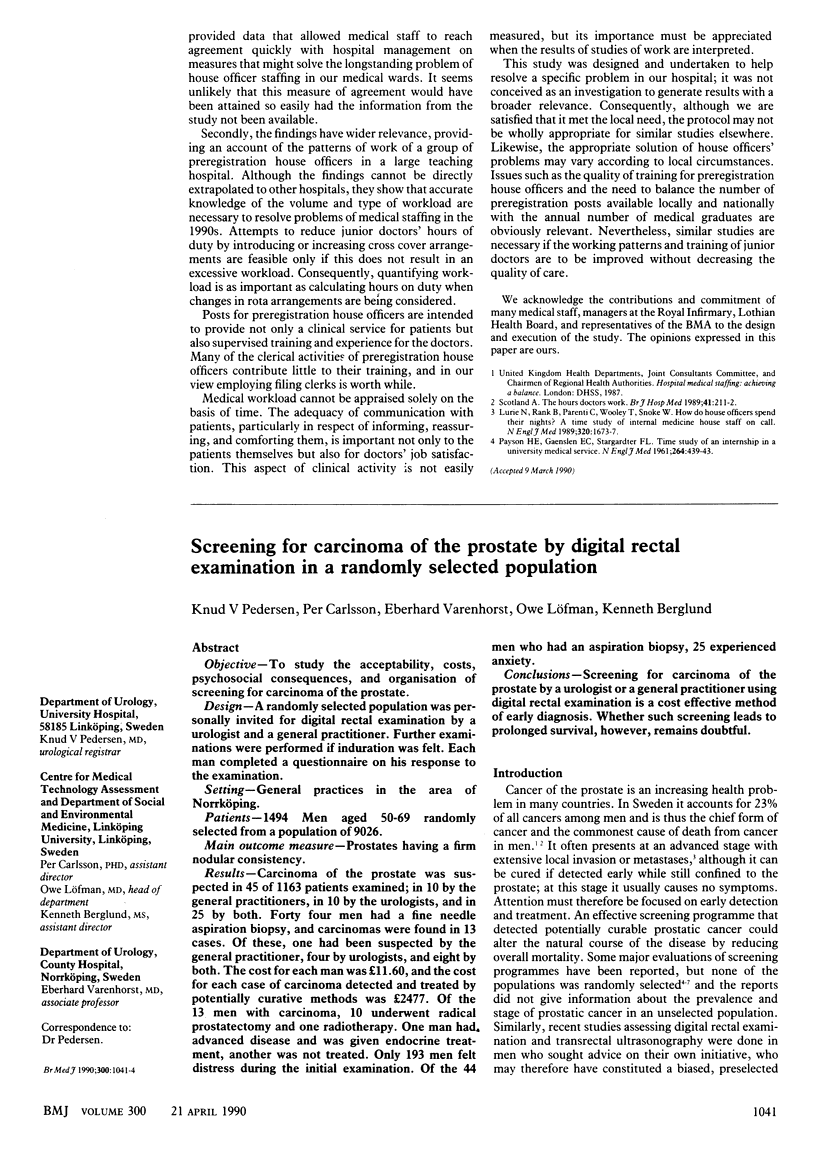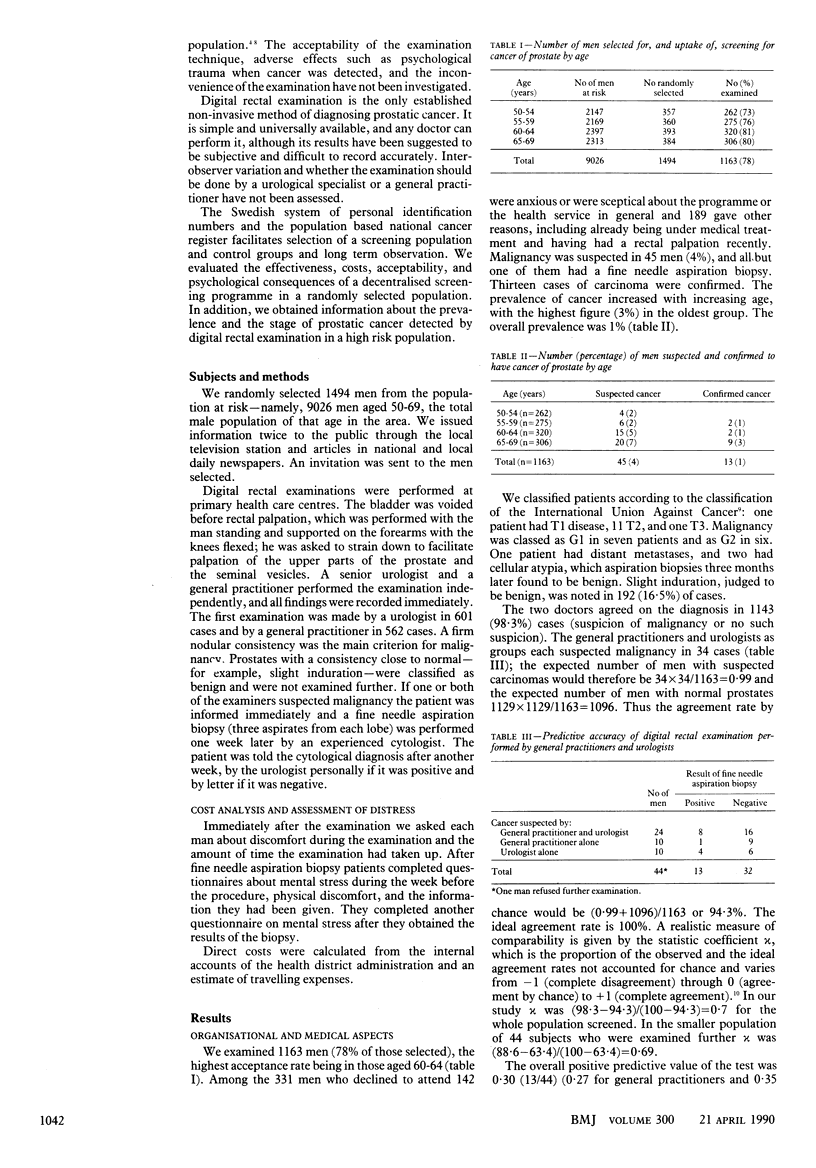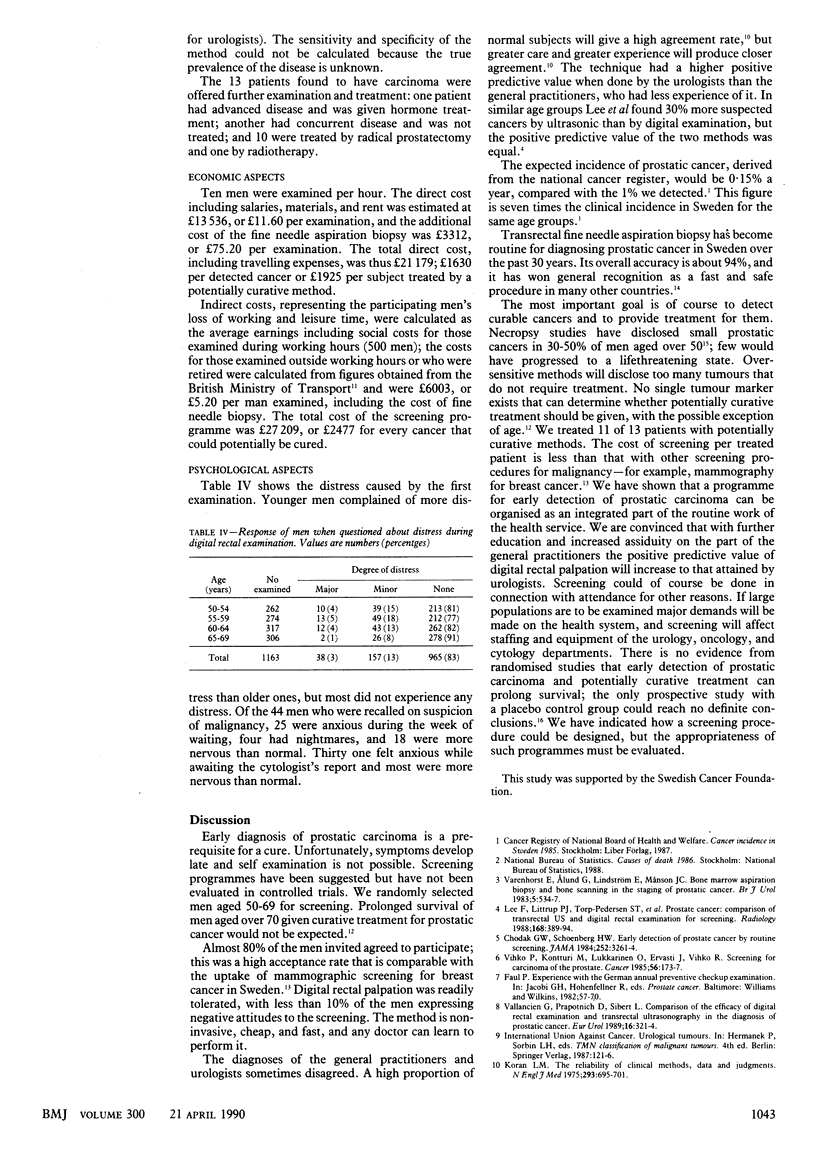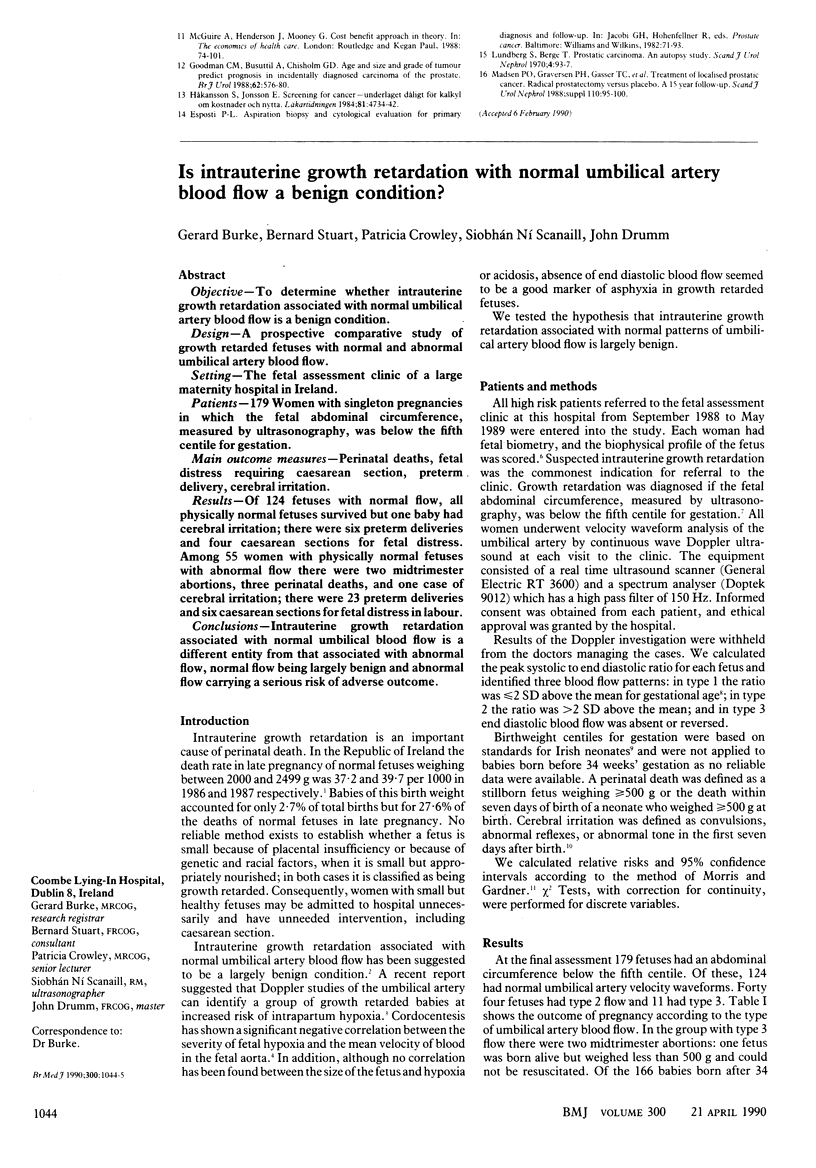Abstract
OBJECTIVE--To study the acceptability, costs, psychosocial consequences, and organisation of screening for carcinoma of the prostate. DESIGN--A randomly selected population was personally invited for digital rectal examination by a urologist and a general practitioner. Further examinations were performed if induration was felt. Each man completed a questionnaire on his response to the examination. SETTING--General practices in the area of Norrköping. PATIENTS--1494 Men aged 50-69 randomly selected from a population of 9026. MAIN OUTCOME MEASURE--Prostates having a firm nodular consistency. RESULTS--Carcinoma of the prostate was suspected in 45 of 1163 patients examined; in 10 by the general practitioners, in 10 by the urologists, and in 25 by both. Forty four men had a fine needle aspiration biopsy, and carcinomas were found in 13 cases. Of these, one had been suspected by the general practitioner, four by urologists, and eight by both. The cost for each man was 11.60 pounds, and the cost for each case of carcinoma detected and treated by potentially curative methods was 2477 pounds. Of the 13 men with carcinoma, 10 underwent radical prostatectomy and one radiotherapy. One man had advanced disease and was given endocrine treatment, another was not treated. Only 193 men felt distress during the initial examination. Of the 44 men who had an aspiration biopsy, 25 experienced anxiety. CONCLUSIONS--Screening for carcinoma of the prostate by a urologist or a general practitioner using digital rectal examination is a cost effective method of early diagnosis. Whether such screening leads to prolonged survival, however, remains doubtful.
Full text
PDF



Selected References
These references are in PubMed. This may not be the complete list of references from this article.
- Chodak G. W., Schoenberg H. W. Early detection of prostate cancer by routine screening. JAMA. 1984 Dec 21;252(23):3261–3264. [PubMed] [Google Scholar]
- Goodman C. M., Busuttil A., Chisholm G. D. Age, and size and grade of tumour predict prognosis in incidentally diagnosed carcinoma of the prostate. Br J Urol. 1988 Dec;62(6):576–580. doi: 10.1111/j.1464-410x.1988.tb04429.x. [DOI] [PubMed] [Google Scholar]
- Koran L. M. The reliability of clinical methods, data and judgments (second of two parts). N Engl J Med. 1975 Oct 2;293(14):695–701. doi: 10.1056/NEJM197510022931405. [DOI] [PubMed] [Google Scholar]
- Lee F., Littrup P. J., Torp-Pedersen S. T., Mettlin C., McHugh T. A., Gray J. M., Kumasaka G. H., McLeary R. D. Prostate cancer: comparison of transrectal US and digital rectal examination for screening. Radiology. 1988 Aug;168(2):389–394. doi: 10.1148/radiology.168.2.3293108. [DOI] [PubMed] [Google Scholar]
- Lundberg S., Berge T. Prostatic carcinoma. An autopsy study. Scand J Urol Nephrol. 1970;4(2):93–97. doi: 10.3109/00365597009137581. [DOI] [PubMed] [Google Scholar]
- Madsen P. O., Graversen P. H., Gasser T. C., Corle D. K. Treatment of localized prostatic cancer. Radical prostatectomy versus placebo. A 15-year follow-up. Scand J Urol Nephrol Suppl. 1988;110:95–100. [PubMed] [Google Scholar]
- Vallancien G., Prapotnich D., Sibert L., Lugagne P. M., Veillon B., Brisset J. M., Andre-Bougaran J. Comparison of the efficacy of digital rectal examination and transrectal ultrasonography in the diagnosis of prostatic cancer. Eur Urol. 1989;16(5):321–324. doi: 10.1159/000471607. [DOI] [PubMed] [Google Scholar]
- Varenhorst E., Alund G., Lindström E., Månson J. C. Bone marrow aspiration biopsy and bone scanning in the staging of prostatic cancer. Br J Urol. 1983 Oct;55(5):534–537. doi: 10.1111/j.1464-410x.1983.tb03364.x. [DOI] [PubMed] [Google Scholar]
- Vihko P., Kontturi M., Lukkarinen O., Ervasti J., Vihko R. Screening for carcinoma of the prostate. Rectal examination, and enzymatic and radioimmunologic measurements of serum acid phosphatase compared. Cancer. 1985 Jul 1;56(1):173–177. doi: 10.1002/1097-0142(19850701)56:1<173::aid-cncr2820560127>3.0.co;2-0. [DOI] [PubMed] [Google Scholar]


